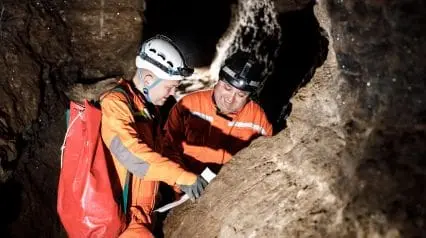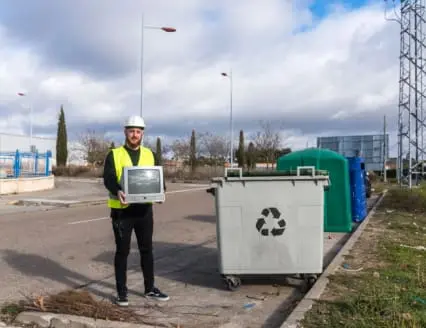What is a Sewage Treatment Plant?
A sewage treatment plant, also called a wastewater treatment plant, is a facility where a person’s wastewater from their toilets, sinks, and tubs is cleaned. They are an integral part of the sanitation process to ensure the health and safety of everyone in a community.
Most of the time, sewage treatment plants handle all the wastewater from homes and commercial establishments in an area. However, it isn’t uncommon for them to also hold the sewage system’s stormwater.
Raw sewage enters the plant, which they treat using different machines and processes. During the treatment process, the plant aims to remove as many bacteria and contaminants in the water as possible before reintroducing it to an ocean or lake.
Importance of a Functional Sewage Treatment Plant
All human waste needs to go somewhere, and while this usually denotes trash and food waste, it also includes water waste that comes from kitchens and bathrooms. Most of the time, humans dispose of their water waste by placing it back into the rivers or ocean. However, if they don’t treat the waste, they introduce contaminated water back into our water sources, which can harm wildlife, the ecosystem, and even humans.
Aside from hurting the wildlife, the solids in the water undergo a natural decaying process. When solid materials decay, they use up oxygen in the environment. This can be very dangerous as a lack of oxygen in the water can drastically affect the plants and wildlife underwater, a crucial part of sustaining our ecosystems.
So, a sewage treatment plant serves a valuable purpose. These plants are responsible for handling all the wastewater in a particular area and ensuring that they only reintroduce the wastewater to the oceans and rivers after it has been properly cleaned and treated to remove any solid particles and contaminants.
Types
There are different approaches to sewage treatment, which is why there are quite a few types of sewage treatment plants. These sewage treatment plants are present all around the world, and the only difference is in the way they treat their wastewater.
While there are variations from locality to locality, these treatment plants fall into the same general templates. These are the main types of plants that are present worldwide:
Rotating Disc System
The rotating disc system for sewage treatment plants is pretty common nowadays. While it’s a pretty recent system, it can also be retrofitted into other sewage treatment plants to create sanitized and cleaned effluent.
These sewage treatment plants are ideal for plants that handle the sewage of a widely populated area. One of the major benefits of these plants is that they don’t require to be de-sludged that often. Typically, a rotating disc system plant will only have to de-sludge once every 12-18 months, which can help save on time, effort, and costs.
This low maintenance quality is a key reason that many modern plants are shifting to this system. With that said, while it doesn’t require constant de-sludging, it does need service every 6-12 months to keep it running to the best of its abilities.
Activated Sludge Plant
This is another common type of sewage treatment plant. These plants use oxygen and microorganisms to clean and sanitize the sewage. This works by oxidizing the pollutants, which creates a sludge-type substance.
Submerged Aerated Filter System
These sewage treatment plants are one of the simpler systems available. A submerged aerated filter system requires very little maintenance and has just a few moving parts, making it very easy to keep running.
This type of sewage treatment plant is also known as a SAF system. This is a great option for plants that aim to reduce overhead costs without affecting the sanitation process. Despite its simplicity, a SAF system can effectively clean sewage before it’s released into oceans and rivers.
Additionally, these systems utilize an automatic de-sludging system. This means you won’t have to manually de-sludge the system, which can be both time-consuming and costly.
Sequencing Batch Reactors
This system is one of the most flexible types of sewage treatment plants. It treats sewage through a series of steps. However, each of the steps takes place in the same tank, which reduces the need to transfer the sewage.
The reason this is a popular system is its flexibility. A sequencing batch reactor sewage treatment plant is able to handle strong and diluted sewage pretty easily. Additionally, these treatment plants tend to have a lower carbon footprint, another huge benefit of these types of sewage treatment plants.
Create Your Own Sewage Inspection Checklist
Eliminate manual tasks and streamline your operations.
Get started for FREEThe 3 Stages of Treating Sewage
Regardless of the type of sewage treatment plant, raw sewage is typically sanitized in three phases. Again, there can be small variations from plant to plant, but the sewage treatment process is usually accomplished in these three phases:
Primary Treatment
This is the first stage of treating sewage. This is typically done by letting the sewage sit in a tank for some time. When this happens, the solid particles settle at the bottom of the tank. The particles are then left behind, and the sewage is transferred to the second phase of the process.
With that said, most plants install a mechanical scraper into the collection tanks. That way, it can capture more solid particles and pollutants in the sewage.
Secondary Treatment
The primary treatment of sewage isn’t a deep treatment. This occurs in the second phase. During this phase, the plant uses biofiltration, aeration, and oxidation ponds for the sewage. This causes the biological compounds in the wastewater to naturally degrade, creating a much safer effluent to release into the water.
Tertiary Treatment
This is the last phase in the process and is used to treat the water and help it reach industrial standards or the standards for releasing effluent into the water set by the locality of the sewage treatment plant. In many sewage treatment plants, this phase involves removing pathogens from the water, making the water safe for drinking.
Integrate ESG principles into your operations
Drive sustainable growth and create long-term value with our ESG solutions.
Explore nowFAQs about Sewage Treatment Plants
Sewage treatment is important because all our sewage needs to go somewhere. And the main solution for most localities is reintroducing the waste into the rivers and oceans around us. To ensure that they aren’t introducing harmful water back into the oceans and rivers, sewage treatment is necessary.
Sewage treatment aims to clean and sanitize wastewater before it’s reintroduced into the oceans and rivers. This water treatment process involves removing pollutants, contaminants, and even pathogens to ensure the effluent is safe for the environment and ecosystem.
Most sewage treatment plants use anti-foaming agents, coagulants, pH neutralizers, and flocculants to treat the wastewater.
Yes. Sewage treatment can remove pathogens and viruses from the water before reintroducing them into the oceans and rivers. If the pathogens aren’t caught before entering the main bodies of water, it can lead to a breakout of disease, which is very dangerous.




